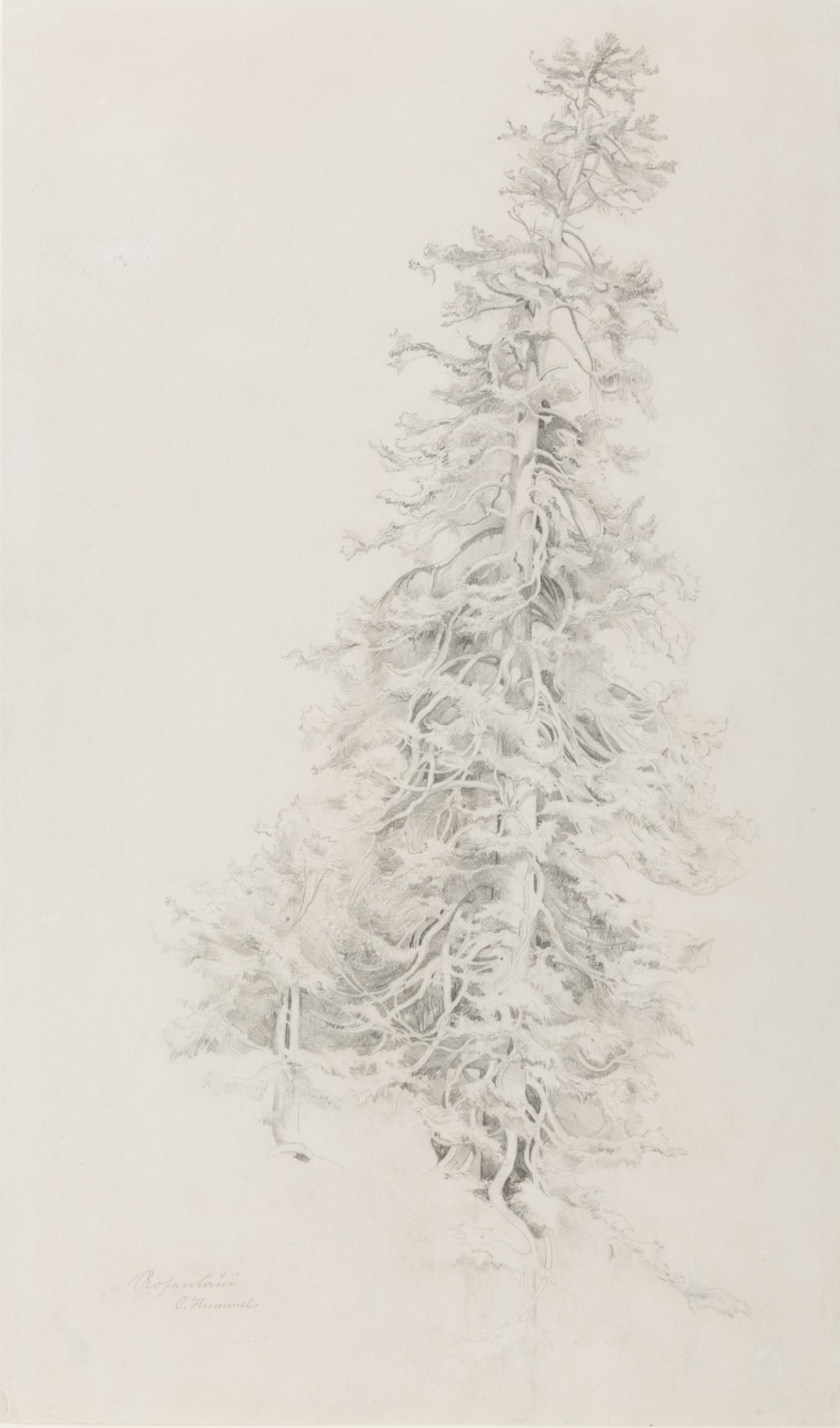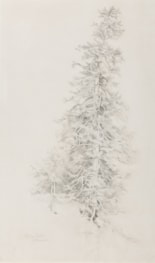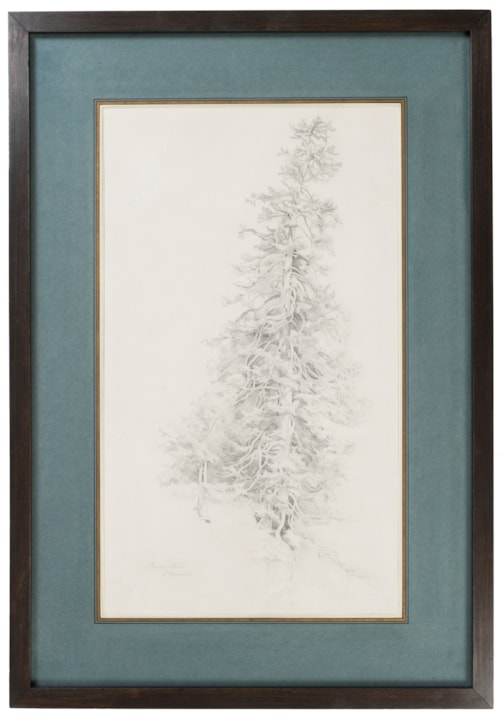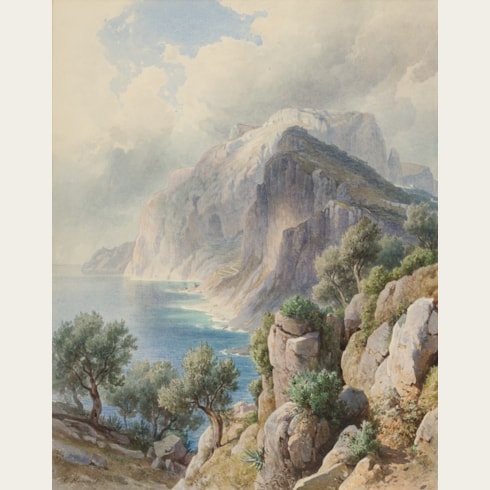Carl HUMMEL
(Weimar 1821 - Weimar 1907)
A Spruce Tree in the Rosenlaui Valley in the Bernese Alps
Sold
Pencil. Signed and inscribed Rosenlaui / C Hummel in pencil at the lower left.
489 x 287 mm. (19 1/4 x 11 1/4 in.)
489 x 287 mm. (19 1/4 x 11 1/4 in.)
The present sheet was probably drawn on Carl Hummel’s return journey to Germany from Italy in c.1846. The Reichenbachtal or Rosenlaui valley, beneath the Rosenlaui glacier in the Bernese Alps of western Switzerland, is dominated by alpine meadows and towering forests, as well as mountain cliffs, gorges and waterfalls. As a 19th century English guidebook noted of the area, ‘From the [Reichenbach] Falls to Rosenlaui, the path gradually rises along the side of the Reichenbach Valley, beloved of artists. During the journey the eye is charmed with ever-varying combinations of rock and grassy slope, woodland and waterfall, with the snowy peaks of the Welhorn and Wetterhorn piercing the blue sky in front.’
Hummel made numerous careful studies of trees, often of considerable scale, throughout his career. Another large pencil drawing of trees at Rosenlaui was recently on the art market in Germany.
Hummel made numerous careful studies of trees, often of considerable scale, throughout his career. Another large pencil drawing of trees at Rosenlaui was recently on the art market in Germany.
The son of the Austrian composer and conductor Johann Nepomuk Hummel and the opera singer Elisabeth Röckel, the landscape painter Carl Maria Nicolaus Hummel studied under Friedrich Preller the Elder at the Royal Free Drawing School in Weimar, from the age of twelve until he turned twenty. He spent several years travelling and making sketching tours of England, Norway, the Tyrol, sometimes with Preller, and the two artists remained lifelong friends. Between 1842 and 1844 Hummel was in Italy, spending long periods in Rome, Capri and Sicily. Following his marriage in 1845 he returned to Italy and Switzerland, but by the following year had settled in his native city of Weimar. There, in 1860, he was appointed a professor at the newly-established Grand-Ducal Saxon Art School, and from this time onwards he travelled mainly in Germany. Most of Hummel’s paintings are of Tyrolean and Italian views, and a retrospective exhibition of his work was held at the Castle Museum in Weimar in 1905, two years before his death. Much of the contents of Hummel’s studio remained with his descendants in Weimar until 1993.






